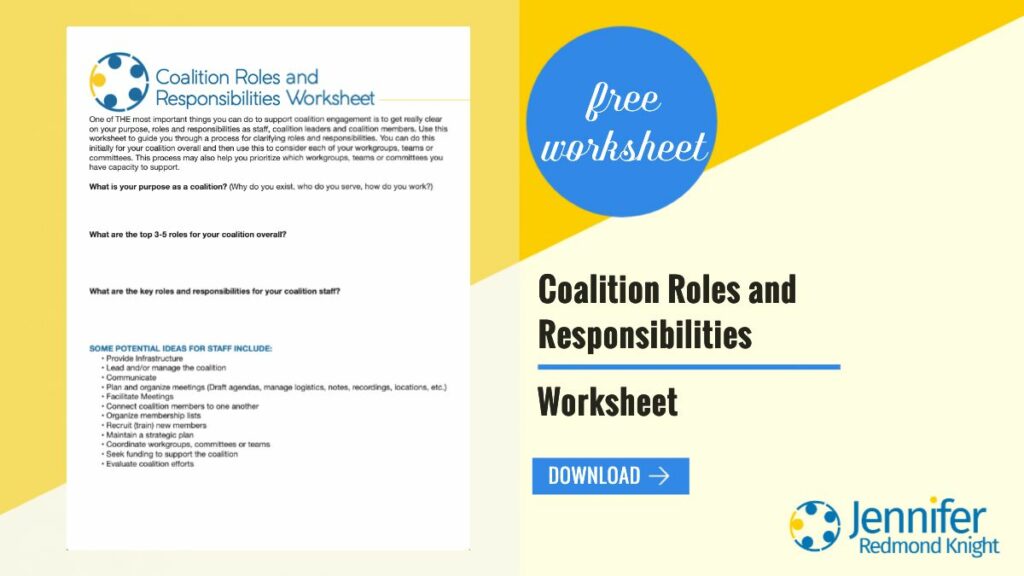One of the most important and challenging aspects of coalition work – and sometimes life – is prioritizing. When leading a coalition, you can see all the needs and all the opportunities. There is always more to do than you have time, resources or partners who can do it. I remember the first coalition I worked with struggling with wondering if anything they were doing was having an impact. They attempted to manage a workgroup in every area of the cancer continuum and discussed every aspect of cancer prevention, early detection, treatment and survivorship during each gathering. The groups kept discussing important issues but couldn’t move past discussion to action. Although it was difficult at first, the benefit of prioritizing allowed the entire coalition to make a collective impact that created momentum and energy to continue to work together. Join me this week as I provide three categories to consider when setting priorities.
Feasibility.
The first area to consider is feasibility. This can include aspects of level of ease or difficulty to implement, having the right resources, including funding, staffing and people with an interest in this area. You will want to reflect upon whether this is an area that has evidence to inform the work or if you will need to research the work as you implement it (and if you have the resources to do this). One of the best ways to consider current feasibility is to reflect on past successes or challenges. What was possible during a previous project? Did the expectations and timeline happen according to plan? What does your coalition have capacity to do right now? When it comes to feasibility, it’s important to be as honest as possible and not compare yourself with others. When you start to look at other coalitions or workgroups and think that since they can do it, you should be able to do it, you can miss evaluating your own reality. You often don’t know what resources or support they had to do the work they did. Feasibility is all about being realistic with what you have and who you have right now. In a few years, what was not feasible now may be completely feasible. Alternatively, what is feasible now may not be feasible in the future. The focus for feasibility is right now rather than what could be.
Impact.
Another category to consider when prioritizing is impact. When you are reflecting on possible focus areas or strategies, which one of them has the potential for the greatest impact? What does the data show is a great need and has the potential for a population impact? Are there potential policy or system changes associated with this focus area or strategy? Is there existing evidence that working in this area in this way will have an impact? Similar to feasibility, you can reflect on past successes and challenges when considering impact possibilities. For this area, it may be helpful to evaluate how other groups or coalitions made an impact in specific areas and if your context may be similar.
Alignment.
As we discussed several weeks ago, one aspect of coalition work is planning and developing plans. When we think about prioritizing, we want to reflect on how the priority efforts will align with the plans developed. Which one is particularly important to you and your coalition? How does the proposed work align with the coalition’s existing efforts and the purpose of the coalition or workgroup? You will want to consider how the proposed focus may align with existing efforts among other groups or perhaps even compete with other groups. Is a potential priority meeting a gap or need identified by your coalition or another group? When considering alignment, you also want to consider your coalition members. How does the proposed effort align with the efforts of other organizations participating in the coalition? When there are high levels of alignment and the type of work requires multiple people working together to accomplish it, the potential for collective success and win-win opportunities increases. Alternatively, if there is a lot of alignment with the individual work of the organizations, there is also a risk for competition and concern for credit so you will need to have conversations about alignment, roles, responsibilities and ownership related to the areas of interest.
So what about you? How will considering feasibility, impact and alignment help you in your prioritization work in your coalition? Or in other areas of your life?
As you consider your coalition combining efforts, one of the aspects I highlighted was clarifying roles. If you would like more support in this area, check out my free Coalition Roles and Responsibilities worksheet.

Photo by Patrick Perkins on Unsplash

